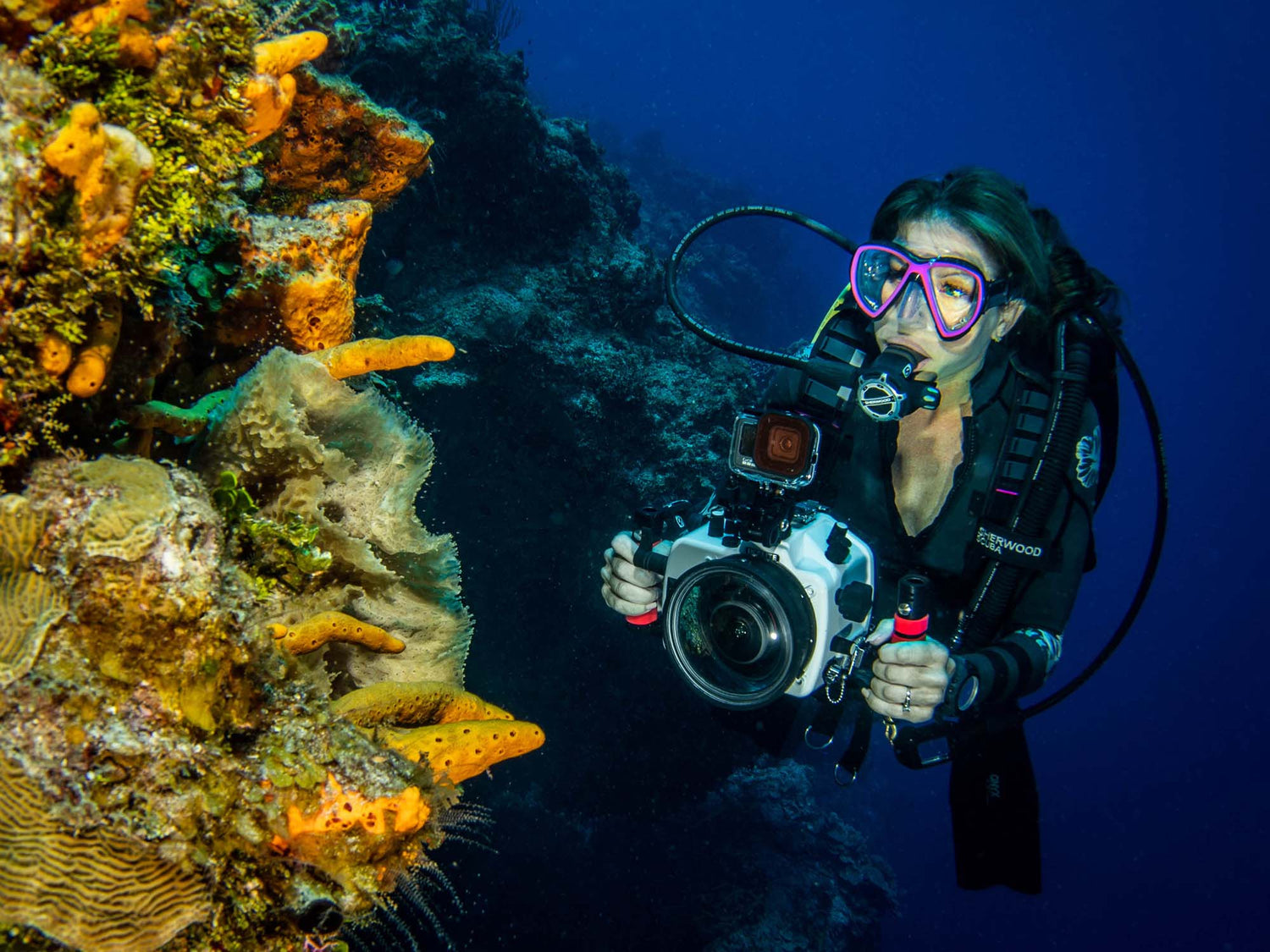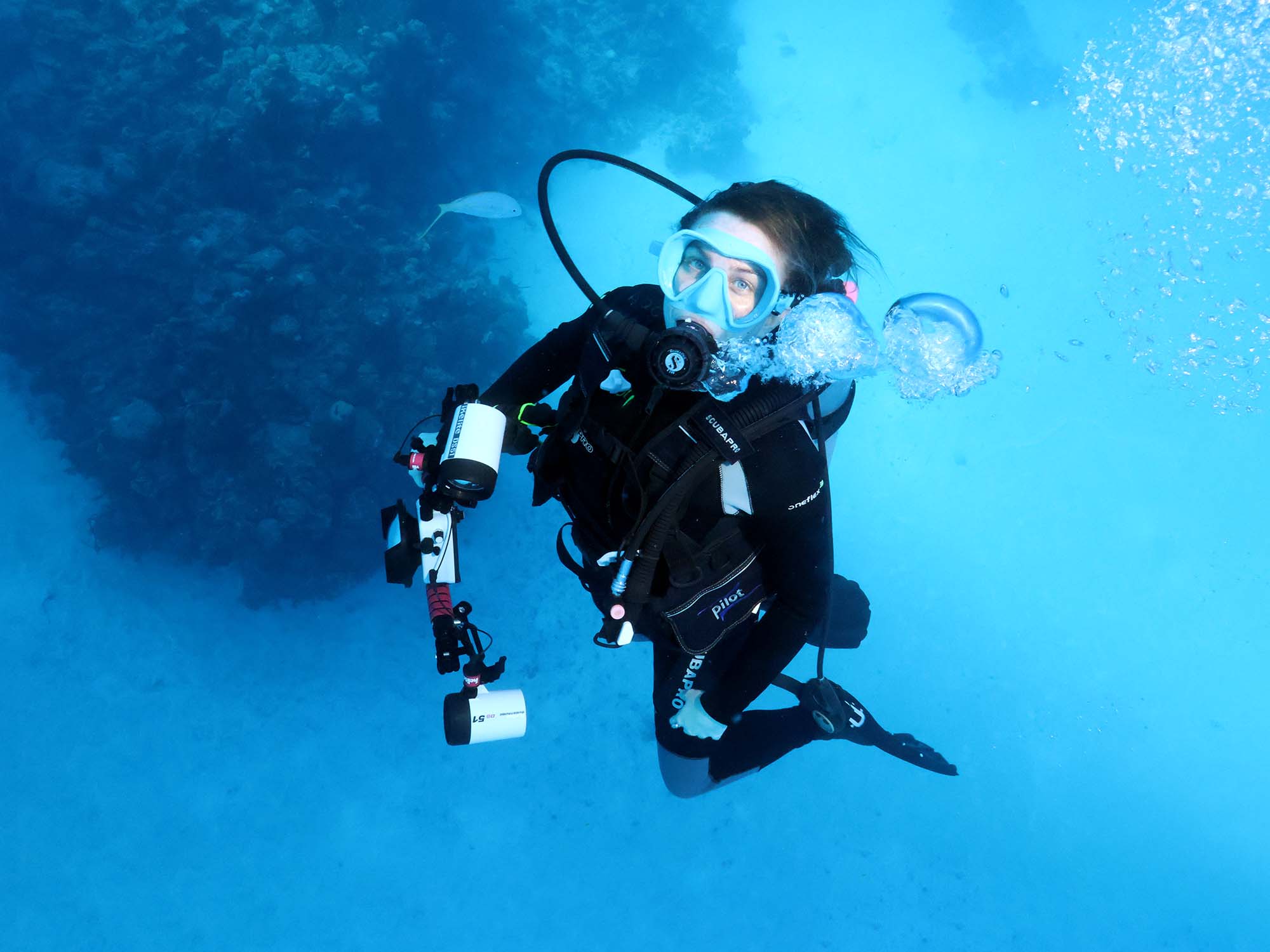By Denise Pietsch
Cover image © John Brigham
"You should’ve seen this reef ten years ago,” is a common phrase you'll hear on a dive boat in reference to coral degradation. In a sea full of shark poaching, coral bleaching, and floating garbage patches it’s easy to get sucked into the downward spiral of climate doom. But it’s not useful. Climate doom leaves us disempowered, paralyzed, and hopeless. So, what can we do? Well, there’s a lot of hope in underwater photography. Grab your gear and let’s dive into the ways your favorite hobby can help save the planet.

"We need to respect the oceans and take care of them as if our lives depended on it. Because they do." - Sylvia Earle.
Image © Lorenzo Terraneo
Share Your Photos
One of the easiest ways to take part in conservation work is something you’re probably already doing: sharing your photos. General estimates show that only 6 million people worldwide scuba dive. That means 99.9% of Earth’s population doesn’t see what divers do. But your photos change that. Your underwater footage is integral to helping the rest of the world see and understand the delicate beauty beneath the waves, and why it’s so important to save it.
“It’s when you love something first that you’ll even care to protect it.” - Luca Martinez
Ikelite Ambassador and environmentalist Luca Martinez has made waves with this understanding by leveraging his impressive social media following to raise awareness about the destruction of the Florida Everglades. Other famous underwater photographers, like Paul Nicklen and Christina Mittermeier, have created organizations based on the principle that photography is critical to helping save the ocean.
But you don’t need to be a famous photographer to make an impact. Whether it’s social media or the family table, sharing your underwater images can help others fall in love with the ocean and want to protect it too.
@lucamartinez.fl Nothing quite like the world under there ✨🌱 #fyp #everglades #florida #relaxingvideos ♬ original sound - Luca Martinez
Citizen Science Projects
Get involved in scientific research without the PhD. Citizen Science projects consist of crowd sourced data, like underwater photos, which are used in research by scientists around the globe working to protect critical marine life. Photo-ID projects are an important part of this work.
Protecting the oceans largest and smallest creatures starts by understanding them. Submitting your images to photo identification projects, like the Florida Manta Project or Spotting Giant Sea Bass, can help establish migratory patterns, population size, and nursery locations all of which aid researchers in studying and defending marine life.

"We are underwater photographers that take diagnostic images of fish in their native habitat... and donate our images and data to the Smithsonian Tropical Research Institute and other scientists and marine science non-profits." - Carlos and Allison Estape Image © Carlos Estape
Coral Restoration and Scientific Documentation
Underwater photography is also a key player in marine-based scientific documentation as well as coral restoration. The researchers at Scripps Institution of Oceanography have been using their Ikelite gear for over a decade to document their research and share it with the public.
Community based organizations like The Coral Conservancy use underwater photography for documentation, teaching, and nonprofit marketing. Other underwater photographers, like Austin Greene, a postdoctoral investigator with Woods Hole Oceanographic Institute, uses his Ikelite gear to document how coral reefs are studied.
Documenting changes in coral overtime is integral in helping nonprofits and research facilities secure funding to continue their work. Underwater photography provides a visual component to this research which often has a greater impact than just statistics and figures alone.

"You don't need a fancy degree, or hundreds of dollars to save a coral reef. You just need a love for our oceans and a pair of fins and a mask!" - The Coral Conservancy Image © Damien Beri
Remove Marine Debris
Leave only bubbles, take only photographs. Safely removing marine debris on your dives is another fantastic way to help support the environment. Ikelite Featured Customer and author, Jess Alexanderson, regularly takes part in dive cleanups with a local crew in the Pacific Northwest. This is a great way to keep your local dive spot clean and healthy while building a sense of community. If you’re a regular diver, dedicating one dive a month to removing marine debris will make a powerful impact, and studies show that it will make you feel better too!
Underwater Photographers Making a Difference

Photos like this octopus imprisoned by a discarded fishing net are a powerful tool in helping people understand the impact of careless actions. Image © Lorenzo Terraneo
Some of the most passionate conservationists I know are divers. It’s no wonder that a place you love to explore is a place you want to protect; and your camera gear can play a pivotal role in that protection. Environmentalism doesn’t always mean lobbying congress and marching at protests, sometimes it’s as simple as sharing your latest underwater photo with a friend or submitting an image of a manta ray to an online database.

Denise Pietsch (pronounced “Peach”) currently manages Ikelite’s Photo School and social media presence. Denise hails from New Jersey, where she obtained a degree in Dance Therapy. After years teaching dance she migrated into the corporate world and eventually came around to Ikelite via the natural career path of fruit distribution and early childhood development. In the end, her lifelong love of photography and octopuses combined into the work she does now. In addition to sharing her energy and enthusiasm with the underwater community she also manages social media for her dog, Joe, collects vinyl records, and enjoys creating memories with her friends and family.
Additional Reading
Illuminating the Technology of Coral Reef Research
Coral Reef Restoration Program in Bonaire
Exposing the Hidden Beauty of the Everglades
New Manatee Habitat Discovered | A Call to Action [VIDEO]
The Brutal Impact of Fisheries on Sea Lions in Mexico
Uncovering the Unexpected with the Florida Manta Project












![The BEST Piece of Advice as a Beginner Underwater Photographer [VIDEO]](http://www.ikelite.com/cdn/shop/articles/best_advice_cover.jpg?v=1680873572&width=2000)
